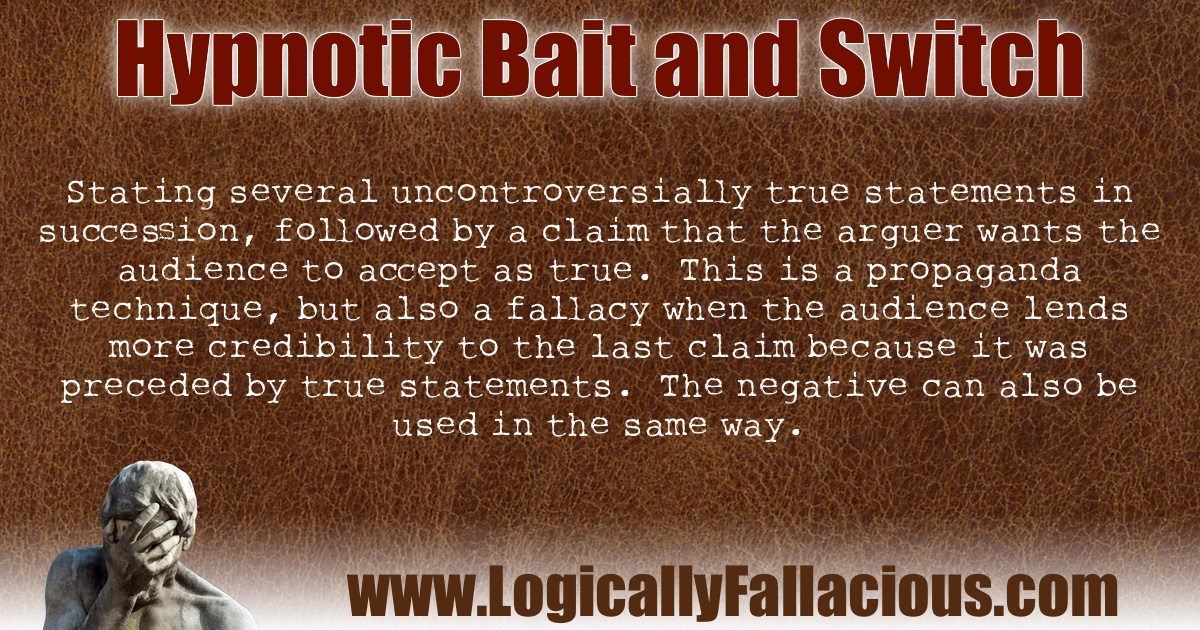Description: Stating several uncontroversially true statements in succession, followed by a claim that the arguer wants the audience to accept as true. This is a propaganda technique, but also a fallacy when the audience lends more credibility to the last claim because it was preceded by true statements. The negative can also be used in the same way.
This is a classic sales technique often referred to as, “getting the customer used to saying ‘yes’!”
Logical Forms:
A succession of uncontroversial true claims is made.
Therefore, claim X (which is controversial), is true.
A succession of uncontroversial false claims is made.
Therefore, claim X (which is controversial), is false.
Example #1:
Do you love your country?
Do you love your family?
Do you care about their wellbeing?
Then you would love Eatme ice-cream!
Example #2:
Is it right that such a small percentage of Americans control the vast majority of wealth?
Is it right that you have to work overtime just to make ends meet?
Is it right that you can’t even afford to leave the state for vacation?
Do you really want to vote for Reggie Lipshitz?
Explanation: As you read through the examples, you can see from where the word “hypnotic” comes. Your subconscious mind starts to take over, and it seems almost reactionary that you start chanting “yes” or “no” (as in the second example) while not really considering with what you are agreeing or disagreeing. These kinds of techniques work best in rallies where those doing the rallying count on you to act with emotion at the expense of your reason.
Exception: It’s an effective persuasion technique, so if you're trying to convince your kids to stay off drugs, then manipulate away. However, if you are trying to get someone to buy a vacuum cleaner, then take your hypnotic bait and switch and shove it up your reusable, hypoallergenic, dust bag.
Tip: Become a human fallacy detector. Look for these kinds of techniques everywhere you go. As a result, your reasonable self will become conditioned to resist taking a back seat to emotional propaganda.

This a logical fallacy frequently used on the Internet. No academic sources could be found.